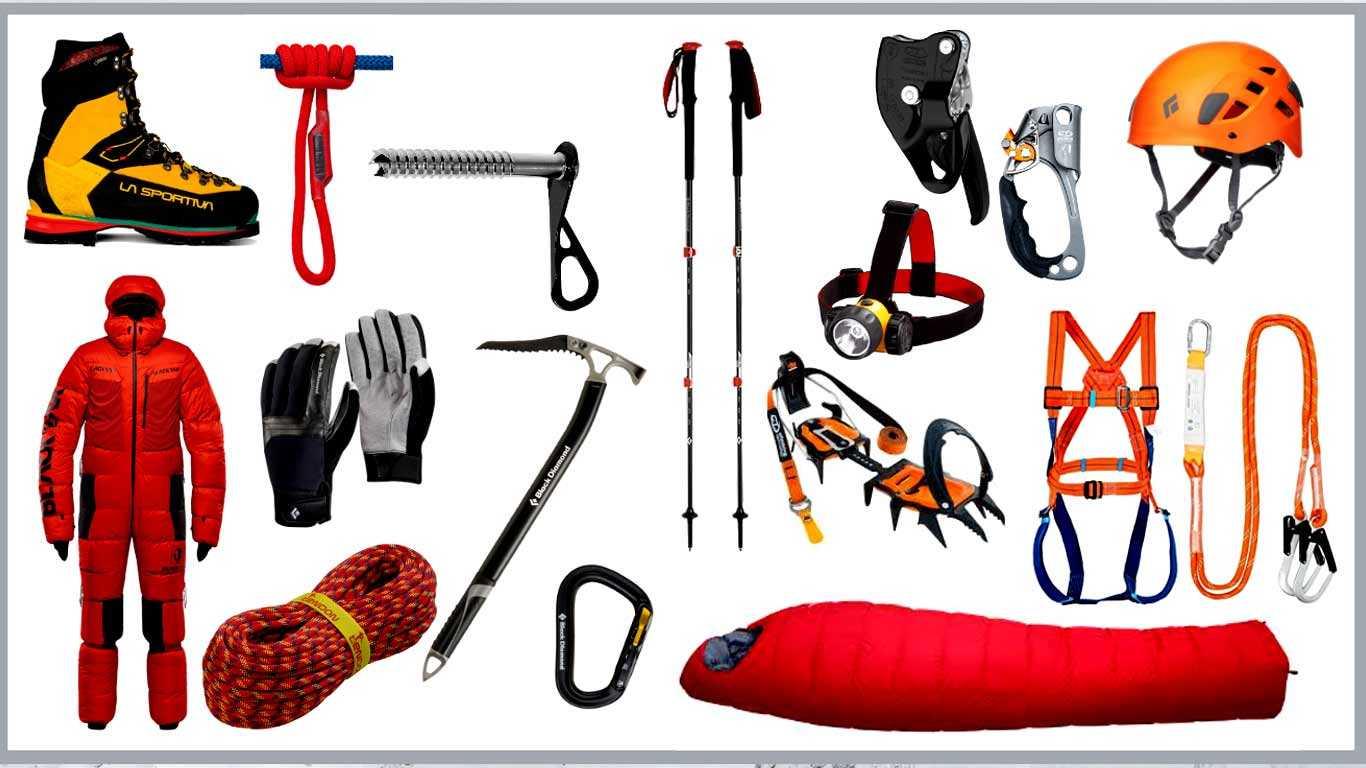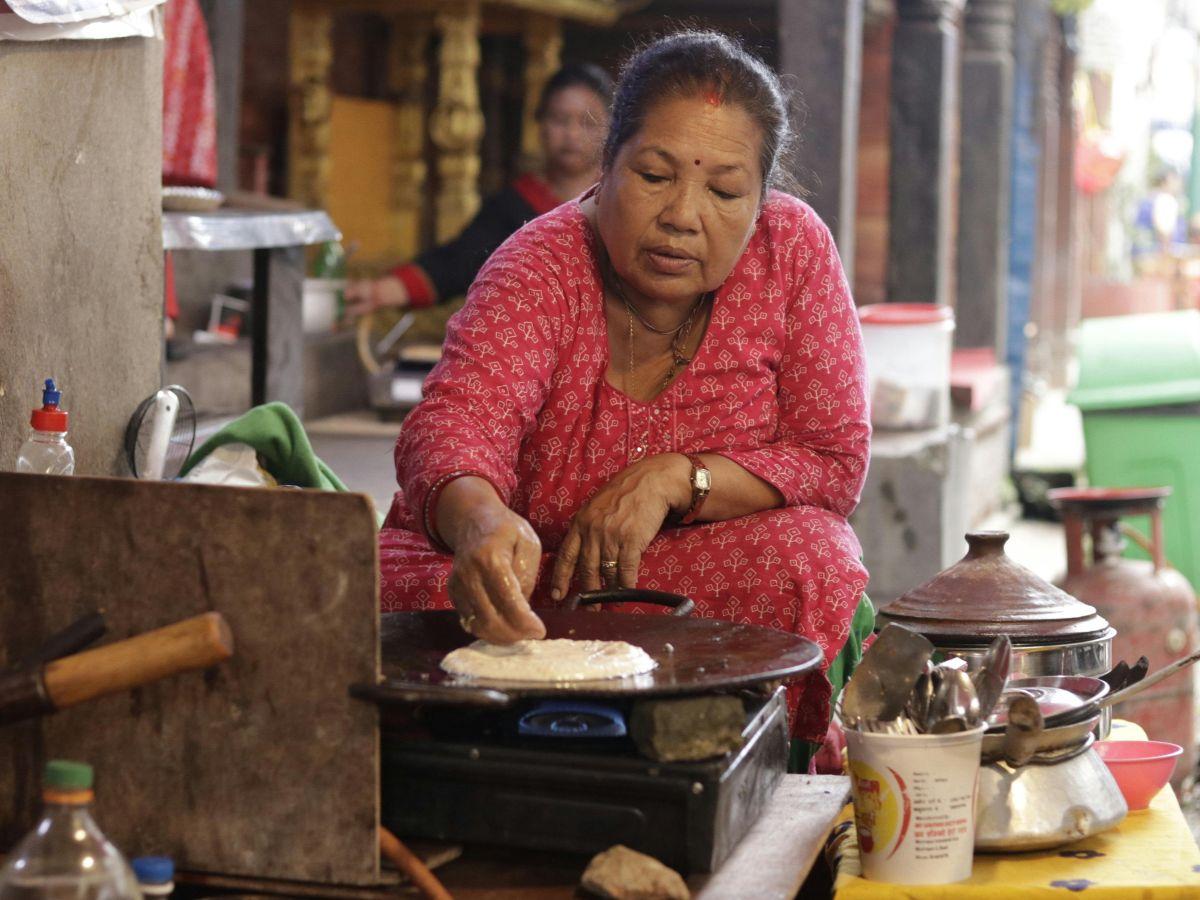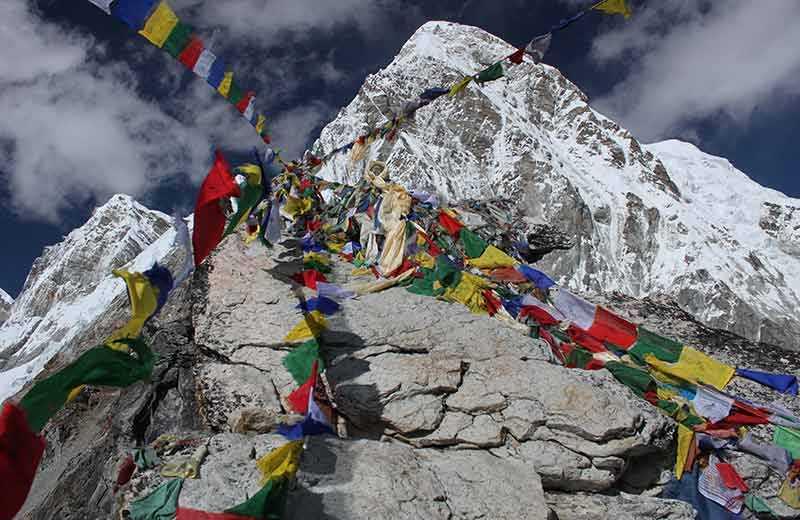Packing List for Peak Climbing in Nepal

A couple of Packing Items for Peak Climb
Peak climbing in Nepal is an exhilarating adventure that attracts mountaineers from around the world. With its breathtaking Himalayan landscapes, challenging terrain, and a multitude of majestic peaks, Nepal offers a unique and rewarding experience for climbers. This adventure activity involves climbing and scaling mountains below 7,000 meters.
Nepal is home to more than 400 peaks open for climbing, providing mountaineers with a challenging and thrilling experience. Nepal Mountaineering Association (NMA) has classified climbing peaks generally falling between 5,000m to 7,000m as "trekking peaks."
Famous Peaks and what gear you need
Some famous Nepal climbing peaks include Island, Mera, Lobuche, Pisang, and Yala. To ensure a successful and safe climbing expedition, it is crucial to pack the right gear and equipment. Here is an overview of a comprehensive packing list for peak climbing in Nepal.

The traveler must be aware of what to wear, what gear to take, including a backpack and footwear, and what to pack for peak climbing in Nepal. This thrilling activity involves various climate zones, from the warm, humid forests at lower hills to the bitterly cold summit zone with glaciers, ice, and snow. It would be best to prepare for all weather conditions. Sunny, windy, rainy, and cold.
To give you a general idea, we brought this ultimate guide to the packing list for peak climbing in Nepal. Also, this packing list is universal. You can pack the same for any peak climbing in Nepal, whether you want to climb Mera, Island, Lobuche, Yala, Pisang, or any other peaks.
General packing list for the Peak Climbing in Nepal
This is our suggested gear and equipment list. Most of the climbing and camping gear is provided by Himalayan Trekkers. You are responsible for bringing the following required, recommended, and optional personal gear and equipment listed below.
We suggest you not go over pack be selective in what you take with you. Kindly note that our porters are limited to carrying 33 lbs. (15 kg).
Clothing for Peak Climbing in Nepal
When preparing for peak climbing in Nepal, it is crucial to pack the right clothing to tackle the challenging alpine conditions. Start with moisture-wicking and quick-drying base layers, such as synthetic or merino wool tops and bottoms, to regulate body temperature during strenuous climbs.
Insulating layers like fleece jackets or down jackets are essential to provide warmth. It also retains body heat in colder environments.
A waterproof and windproof outer shell, consisting of a jacket and pants with breathable membranes, will shield you from rain, snow, and strong winds. Climbing pants that are durable and flexible, along with a combination of long and short-sleeved shirts, are ideal for different conditions and temperatures:
Thermal Base Layer (Tops and Bottoms)
Long-sleeved t-shirts
Short-sleeved t-shirts
Fleece jacket
Waterproof jacket
Down jacket
Thermal trouser
Trekking pants
Fleece pants
Underwear
Sports Bra (Women)
Soft jacket
Insulated jacket
Hiking shorts (for summer-time trek)
Footwear for Climbing in Nepal
Multiple pairs of moisture-wicking and cushioned socks are a must to prevent blisters, and sturdy mountaineering boots with ankle support, a stiff sole for crampon compatibility, and good traction for varied terrain are essential.

Make sure to break them in before your climb to avoid discomfort and blisters. Lastly, include waterproof and breathable gaiters to keep snow, rocks, and debris out of your boots.
Trekking boots
Sandals
Running shoes
Gaiters
Mountaineering socks
Thermal socks
Cotton socks
Head and Hand Gear For Trekking In Nepal
Pack a warm and insulated beanie or hat that covers your ears to protect against cold temperatures at higher altitudes. Additionally, bring a lightweight sun hat or cap to shield your face and eyes from the strong Himalayan sun.
It is essential to have both warm and insulated gloves for colder conditions, such as waterproof gloves with insulation. These will keep your hands warm and protected from the cold. Additionally, pack a lightweight pair of gloves that allow for better dexterity during technical climbing sections.
Warm hat/beanie
Balaclava or neck gaiter
Sunglasses (category four lenses)
Sun hat
Lightweight gloves (wool or fleece)
Mountaineering gloves or down mitts
Climbing Gear
Depending on the specific peak you plan to climb, your climbing gear requirements may vary. However, common climbing gear includes a climbing harness, ice axe, crampons, helmet, carabiners, slings, and ascenders. It's essential to have the necessary technical equipment and know-how to use it properly.
Climbing boots: Sturdy and waterproof boots designed for mountaineering.
Crampons: Metal spikes that attach to your boots to provide traction on ice and snow.
Ice axe: A tool used for balance and self-arrest in case of a fall.
Climbing harness: A harness attached to a rope keeps you safe while climbing.
Carabiners: Used to connect ropes and anchor points.
Climbing helmet: To protect your head from falling rocks and ice.
Ascenders: Used for ascending ropes.
Descenders or belay devices: Used for descending ropes or providing a safety anchor.
Climbing rope: Essential for safety and support during the climb.
Ice screws: Used to anchor ropes to the ice or snow.
Prusik loops: Used for self-rescue or ascending ropes.
Camping Gear in Nepal
For overnight stays during the climb, you'll need camping gear. A high-quality sleeping bag with a suitable temperature rating is crucial to ensure a good night's rest in cold mountain environments. A lightweight and compact sleeping pad is also important for insulation and comfort.

Consider a reliable and durable tent designed for high-altitude use, capable of withstanding wind and snow.
Four seasoned tents: Designed to withstand high winds, heavy snowfall, and extreme temperatures.
Sleeping bag (rated to -20°C or lower): Essential for warmth during the night.
Sleeping pad: To provide insulation and comfort while sleeping.
Stove and fuel: Used for cooking and melting snow for drinking water.
Cooking set and utensils: Essential for preparing meals.
Headlamp and spare batteries: Essential for navigating in the dark.
Water bottles or hydration system: To stay hydrated while climbing.
Water purification tablets or filters: To purify water from streams and rivers.
First-aid kit: Essential for treating injuries and emergencies.
Personal hygiene: To maintain cleanliness and hygiene.
Trekking poles: Help to reduce the strain on your knees while descending.
Miscellaneous
Maps and navigation tools (compass, GPS): Essential for terrain navigation.
Camera and spare batteries: To capture memories of your climb.
Cash and credit card: For emergencies or buying additional supplies.
Passport and permits: To enter and exit the country and obtain necessary permits
Travel insurance: Essential for medical emergencies and evacuations.
Emergency whistle: To signal for help in case of an emergency.
Multi-tool or knife: Essential for cutting and repairing equipment.
How to Dress for Four Different Peak Climbing Seasons in Nepal?
Nepal offers four seasons, and the climate in Nepal dramatically varies depending on the season and region you are traveling to. So, it's essential to dress appropriately for different peak climbing conditions. Here are some basic guidelines for dressing for different seasons in Nepal:
Spring (March-May)
The weather is usually mild and sunny in spring, with occasional rain and snow. For peak climbing this season, you must dress in layers, with a lightweight base layer, mid-layer fleece or down jacket, and a waterproof outer layer. Be prepared for quick weather changes, and bring a warm hat and gloves for higher elevations.
Summer (June-August)
Summer in Nepal is usually hot and humid, but not in the mountain areas. The Himalayas receive frequent rain showers. For peak climbing expeditions this season, lightweight and breathable clothing, such as trousers, long-sleeved t-shirts, and a light jacket, is recommended.
In the wet season, a waterproof jacket, trousers, and a raincoat are all necessary to protect against rain. Waterproof footwear is also essential. Also, remember to get bug spray and mosquito repellent.
Autumn (September-November)
Autumn is the best peak climbing season in Nepal, as the weather is clear and dry. For peak climbing during this time of year, you should dress in layers, with a lightweight base layer, mid-layer fleece or down jacket, and a waterproof and windproof outer layer. You must bring a hat, gloves, and sunglasses to protect against the sun and cold.
Winter (December-February)
Winter in Nepal is cold and dry, with heavy snowfall in the high-altitude areas. For climbing expeditions in the winter, it's even more important to bring warm and insulated clothing to protect from freezing temperatures near the summit.
You must wear a heavy base layer, mid-layer fleece, a down jacket, and a thick, waterproof, and windproof outer layer. You compulsorily bring warm gloves, a hat, and a scarf to protect against the cold.
Important Note: These are general guidelines. You must check the weather forecast and conditions of the region you are trekking in before deciding what to wear.
10 Essential Clothing Tips for Peak Climbing in Nepal
Layering
Layering is key. You must dress in layers to regulate your body temperature as you climb:
A base layer of moisture-wicking fabric that keeps you dry and regulates your body temperature.
The mid-layer provides insulation, which can be a fleece or synthetic insulated jacket.
The shell layer must be waterproof, breathable, and windproof. A hard-shell jacket and pants are recommended for peak climbing.
Insulated Jackets
An insulated jacket is a must-have for peak climbing in Nepal. Choose a lightweight, compressible, warm jacket that can easily pack in your backpack.
Waterproof pants
Invest in waterproof pants made from breathable fabric, which keep you dry and comfortable during the climb. Look for pants with zippers along the sides to allow ventilation and easy removal over your boots.
Warm Headgear
A warm hat or headband will keep your head and ears warm. Choose a hat made of fleece or wool that covers your ears and keeps you warm.
Sunglasses
The sun's glare can be intense at high altitudes, so protecting your eyes with good-quality sunglasses is essential. Look for sunglasses with 100% UV protection and polarized lenses to reduce glare.
Gloves
Choose warm gloves that are waterproof and breathable to keep your hands dry and warm. Insulated gloves are ideal for icy weather conditions.
Thermal Underwear & Socks
Invest in good-quality thermal underwear. Moisture-wicking fabric will keep you dry and warm throughout the climb.
Choose high-quality socks made of wool or synthetic materials that keep your feet warm and dry. Avoid cotton socks, which retain moisture and can cause blisters.
Hiking boots
Invest in sturdy hiking boots with good ankle support and a waterproof and breathable membrane. Make sure they fit well and are comfortable for long hikes.
Gaiters
Gaiters are a must-have accessory for peak climbing in Nepal. They protect your feet and lower legs from snow, rocks, and debris, and keep your feet dry and warm. Choose lightweight and waterproof gaiters made of breathable fabric.
What Not to Bring for Peak Climbing in Nepal?
Don't Carry Disposable Items
Disposable items such as plastic water bottles, food containers, and utensils harm the environment. Thus, it pollutes the mountains, so bring reusable and eco-friendly alternatives.
You can bring refillable water bottles, food containers, and utensils made of bamboo or other sustainable materials. So, try to reduce waste and practice the "leave no trace" principles as much as possible during trekking in the mountains.
Don't Take Equipment Already Provided by the Travel Company
Peak climbing packages include the most critical camp gear, so you don't need to pack a tent, folding chairs, cooking gear, or food. Instead, focus on your personal items like toiletries, medications, and small snacks that you can keep in your daypack.
Don't Pack Too Much Gear
You or your porters must carry everything you bring to peak climbing expeditions. So, you could carry only essentials and leave the rest in the hotel in Kathmandu. Most porter service weights limit your duffel bag to 33 lbs (15 kg), so we advise you to pack lightly and wisely.
More to Know About the Packing List for Peak Climb
What kind of bags should I bring: a duffel bag or a backpack?
For the climbing, you must bring at least two bags. One should have a daypack that you'll carry during your hike. The second one is a duffel bag or backpack. This bag should be slightly larger, from 75L to 90L.
You'll have access to a daypack during the entire day as you hike. It’ll weigh around 11 lbs (5 kg). It'll contain your water, lunch, snacks, camera, or extra layer of clothing.
Similarly, a porter will carry your backpack or duffel bag from campsite to campsite. You'll not have access to this bag during the day. This bag will contain clothing and other toiletries.
Can I join a group climb as a single climber?
Yes, a single climber can join any group climb or even book a private climb.
How do I train for peak climbing in Nepal?
Being in good shape will increase your chances of having a safe climb, a successful summit, and enjoyable experiences. The training program must include aerobic fitness to increase your endurance levels.
So, it would be best to start preparing at least three months before your climbing expeditions. You can join a gym and use a stair climbing machine supplemented with weight training for your legs.
However, being physically fit does not guarantee that climbers can overcome altitude issues, but it does reduce the strenuousness of climbing on the body, making acclimatization more likely.
So, you can perform day hikes on local trails, including uphill and downhill sections. You can wear the clothing, boots, and daypacks you intend to climb in.
Final Say
Remember to pack efficiently, keeping weight restrictions and your personal needs in mind. It is also essential to check the specific requirements of your climbing route and consult with experienced climbers or tour operators for additional guidance.
Having a heavy backpack can be a horrible experience, but at the same time, if you miss some items or clothes, it is even worse. So, you need to find an excellent balance.
Proper preparation and packing will enhance your climbing experience and ensure a safer and more enjoyable journey in the majestic peaks of Nepal.
We have researched, packed, and trekked to bring you this tested packing list for peak climbing in Nepal. This list beforehand can help you avoid leaving essential items behind and prevent over-packing and carrying unnecessary weight.
I hope this ultimate guide will let you organize your gear and ensure you have everything you need for your expeditions.
So, get ready to climb your way to the top!



